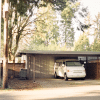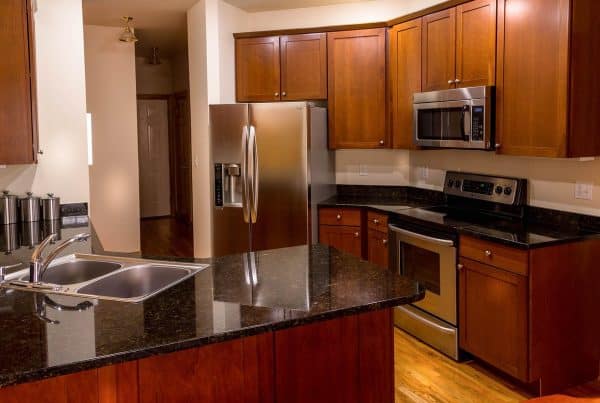When choosing a place to install an air conditioner at home, the first thing to consider is that the coolest air will be at a distance of 2-3 meters from the device. Place it so that this zone is not a bed, a sofa, or another place for sleeping or long rest. In addition, when choosing where to install a conditioner, it is worth choosing a place away from all heating devices. Also, a piece of furniture shouldn’t stand in the way of the air stream, otherwise, the appliance will not be effective enough.
When choosing the right way to mount a conditioner in a room, the location of windows should also be considered. If you have a sunny side, then a stream of cooled air has to go perpendicularly to heat inflows from windows, in this case, a temperature will be spread more evenly. Also, it is not recommended to place a split system opposite the door in a room, so that cooled air will not go into other rooms.
It is very important to know the rules of air conditioner installation, however, it is not obligatory if the device will be installed by specialists. You can find the list of services and the price list at htownacrepair.com.
How to install conditioner correctly
While installing a conditioner under the ceiling, you also should take into consideration the necessary distance – not less than 15 centimeters from the ceiling to provide the space for air movement. As the majority of split systems do not provide an inflow of air from the street, but only cool existing ones. For a healthy microclimate, it is better to install a conditioner in one room with a breeze – it will supply fresh air, and the conditioner will cool it up to chosen temperature.
If you are deciding how to install a conditioner in a bedroom correctly, the best decision will be to place it above the bed – in this case, the zone of the biggest cold will be abroad, and the air will have a pleasant temperature while you are sleeping.
If we are talking about how to install a conditioner in a kitchen properly, then in addition to putting it far from heat sources, such as a cooking stove, one should take into consideration that if airflow will be carried away to other rooms, then kitchen smells will be spread around the house. If you have a gas stove, you should not place an air conditioner opposite it either because the air from it will blow out the flame. In the kitchen, there is often not enough space for the installation of a split system by all the rules, in this case, you can choose a corner or compact installation, at the market, such variants are available.
Subtleties of installation
If we are talking about the installation of the device, you should remember that the quality of the installation will affect the work of the device. If you are wondering how to properly install the air conditioner with your own hands, the right answer will require professional equipment and experience in such work. Otherwise, it is better to entrust the work to a specialist.
While installing a split system, you should take into account the location of the freon line between the blocks, as a rule, its total length is from 5 to 10 meters. Connecting elements are better to close with decorative boxes or hiding in walls – this is more pleasant for the interior and safer for the system. Choosing where to properly install the air conditioner in the house and the location of the future freon line, you need to remember that its length affects the cost of installation.
Rules for air conditioner installation:
- The outdoor unit of the air conditioner is mounted on a flat and solid surface. Both the wall and the fasteners should have a large margin of safety to withstand the weight of the case – about 130 pounds. It is undesirable to mount the condenser unit on aerated concrete walls.
- The outdoor unit must be installed without the slightest misalignment in all planes. The optimal place for it is on an open balcony and under a canopy.
- According to the technical regulations, the pipe and diverting water must enter the sewer system. If this condition cannot be met, it is necessary to arrange the water drain in such a way that the liquid, flowing, does not fall on the passers-by.
- When installing the outer casing, it is necessary to leave a gap of at least 3 inches wide between it and the wall for the optimum blowing of the unit.
- After connecting the freon line of the indoor and outdoor units, it is necessary to vacuum all connections.
Process of installation of split-system air conditioners
Of course, you can rely on the quality of air conditioner installation by professional air conditioner fitters, but you should also be aware of how to install it correctly. To do this, you should follow some important rules:
- Install the air conditioner at least 2-3 inches above the ceiling. This is important for free air circulation and proper operation of the air conditioner;
- It is necessary to agree with a customer beforehand whether to hide all wires in a box or to make a chink in a wall;
- The fixing strip for both indoor and outdoor units is fixed on dowel nails strictly on the level;
- The drilling of a hole for the output of the main pipe is carried out at an angle (bevel to the street) so that the condensate can exit without any obstacles;
- The drainage hose is placed below the freon line and the interlock cable, and everything is connected by reinforced scotch tape;
- The copper pipes are obligatorily flared for further connection, and the freon line is evacuated;
- Connection of the cable to the terminals is made by the wiring diagram;
- In the last stage of installation of the air conditioner, service cocks are opened, and freon is running in the main line.
All that is left is to turn on the air conditioner and enjoy pleasant coolness.








